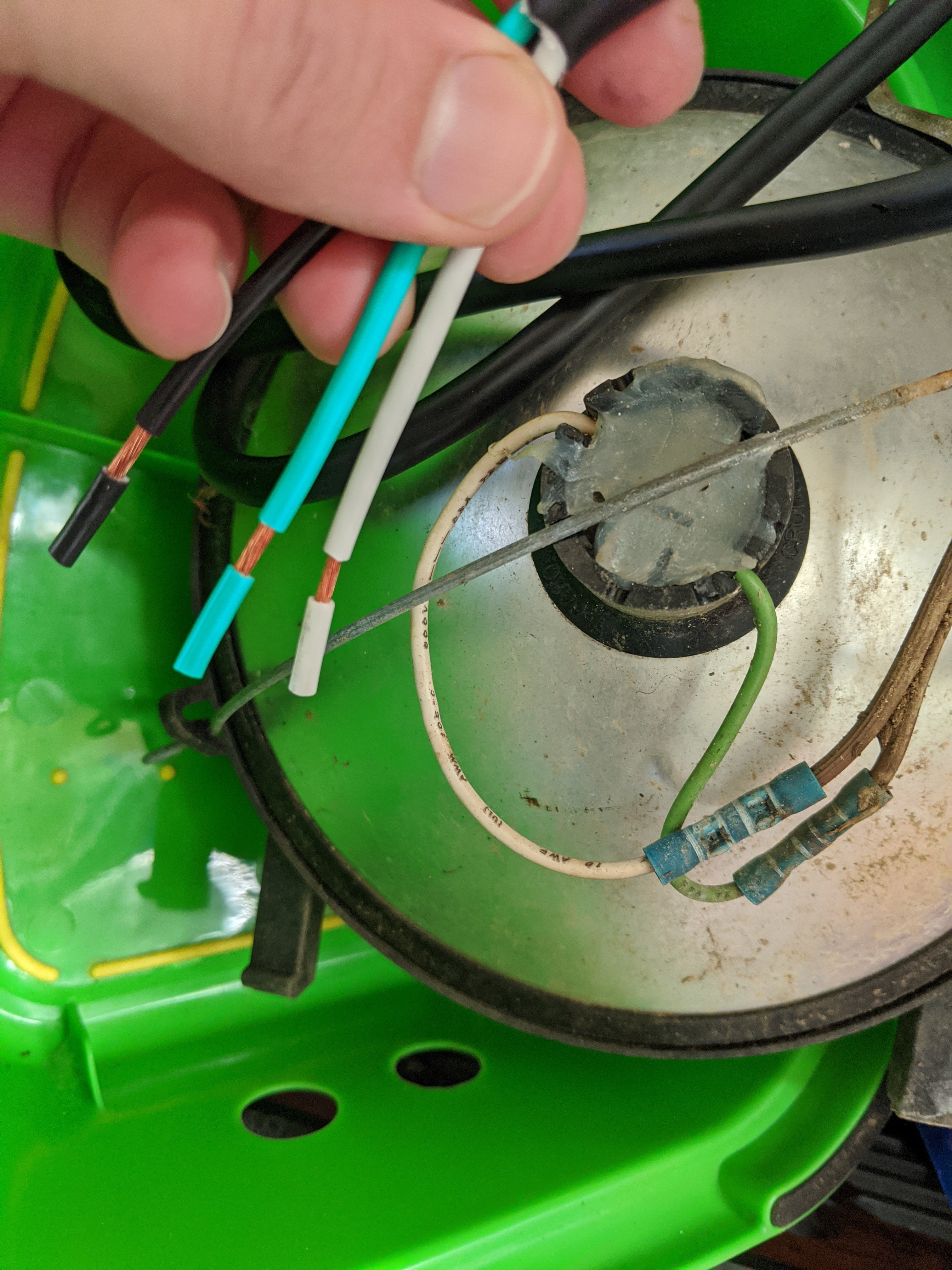 "Cash Rewards" (cashrewards)
"Cash Rewards" (cashrewards)
04/02/2020 at 15:51 • Filed to: None
 0
0
 8
8
 "Cash Rewards" (cashrewards)
"Cash Rewards" (cashrewards)
04/02/2020 at 15:51 • Filed to: None |  0 0
|  8 8 |
Does it matter how I wore this light up, last green is ground?

The cord to this light got cut, and I'm wiring up a new one. So I got white and green out of the light, and black and white going in. Does it even matter for a light?
 Grindintosecond
> Cash Rewards
Grindintosecond
> Cash Rewards
04/02/2020 at 16:05 |
|
 bob and john
> Cash Rewards
bob and john
> Cash Rewards
04/02/2020 at 16:07 |
|
Black is typically ground. so id find out what the 3 wires do on the new bulb first.
SOMETIMES white is the ground.
 Snuze: Needs another Swede
> Cash Rewards
Snuze: Needs another Swede
> Cash Rewards
04/02/2020 at 16:08 |
|
Yes! Black is your power, white is your grounded conductor, green is the grounding conductor. Black and white should be connected to the wires coming from the light bulb - I’d make white to white and black to green. The incoming green, the ground, should be attached to the metal housing if there’s a clip or screw for it, otherwise put a wire nut on it and let it hang.
 Aremmes
> bob and john
Aremmes
> bob and john
04/02/2020 at 16:13 |
|
Not here in the US, where black is live/hot, white is neutral,
green is ground/earth, and brown is (usually) the second phase in split-phase 240V connections. Black or brown
to white or green is 120V, black to brown is 240V, and white to green is 0V.
 Akio Ohtori - RIP Oppo
> Cash Rewards
Akio Ohtori - RIP Oppo
> Cash Rewards
04/02/2020 at 16:15 |
|
Context is key. In 120V AC wiring in the US black is “ hot” , white is neutral (“return”/”ground”) , and green is ground. That looks like what you’re showing. In low-voltage DC black is usually ground and red is usually hot.
BUT there are tons of different standards based on country and voltage so... Context please!
 bob and john
> Aremmes
bob and john
> Aremmes
04/02/2020 at 16:21 |
|
right,m i’m thinking car/bike wiring. not housing wiring.
 Cash Rewards
> Akio Ohtori - RIP Oppo
Cash Rewards
> Akio Ohtori - RIP Oppo
04/02/2020 at 16:26 |
|
Ah. Just a 120v ac light in the US
 MiniGTI - now with XJ6
> Cash Rewards
MiniGTI - now with XJ6
> Cash Rewards
04/03/2020 at 00:04 |
|
White is neutral any other color can be hot. Actually the lime green coming off your fixture might be supposed to go to hot, but can’t tell from the pic.
As others said green should go to metal casing .